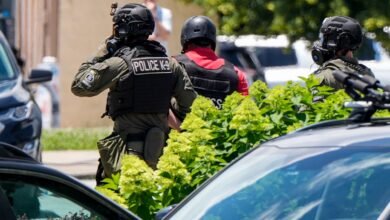Who can be chosen as pope? Rules about who can be selected – NBC New York


With the death of Pope Francis on Monday, the College of Cardinals will soon have to make the difficult choice of who will become the next leader of the Roman Catholic Church.
While many names will be thrown out as possible frontrunners or leading candidates, those high-ranking members of the Church are not the only ones who are eligible to be elected.
So what are the rules concerning who is eligible to be chosen? It’s not as selective as one might think.
The only specifications listed in the Code of Canon Law (the written laws and principals that govern the Catholic Church) state that any bishop who accepts a legitimate papal election becomes pope immediately. If the individual is not a bishop, they have to be made a bishop immediately in order to accept the election.
What does it take to be a bishop? Generally speaking, bishops have been priests for at least five years and are at least 35 years old. However, in theory, any male who has been baptized as Catholic can be named a bishop — meaning that any man who has been baptized in the Catholic Church is technically eligible to be elected pope.
However, to say it is unlikely for a non-cardinal to be elected as pontiff is an understatement. No non-cardinal has been elected pope since the 1300s.
The College of Cardinals elects a new pope in a meeting known as a papal conclave.
Francis’ death now sets off the process of allowing the faithful to pay their final respects, first for Vatican officials in the Santa Marta chapel and then in St. Peter’s for the general public. A precise sequence of events will include the confirmation of death in the pontiff’s home, the transfer of the coffin to St. Peter’s Basilica for public viewing, a funeral Mass and burial.
The dates haven’t been announced yet, but the burial must take place between the fourth and sixth day after his death. After the funeral, there are nine days of official mourning, known as the “novendiali.”
During this period, cardinals arrive in Rome to participate in a conclave to elect the next pope.
To give everyone time to assemble, the conclave must begin 15-20 days after the “sede vacante” — a Latin term meaning the seat is vacant — is declared, although it can start sooner if the cardinals agree.
The cardinals will vote in secret sessions, and the ballots will be burned in a special stove after each session.
Black smoke will indicate that no pope has been elected, while white smoke will indicate that the cardinals have chosen the next head of the Catholic Church.






